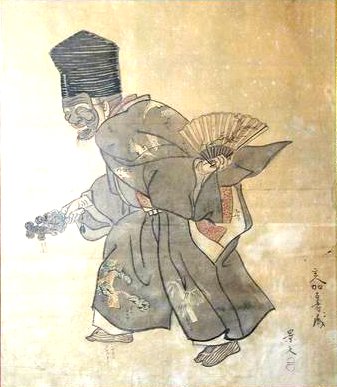
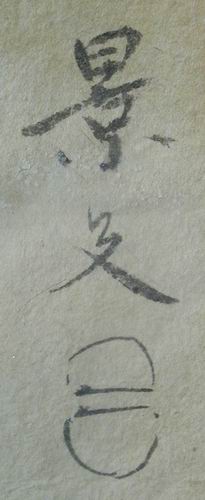
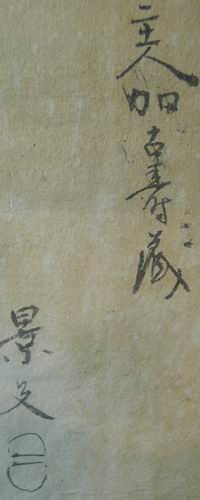
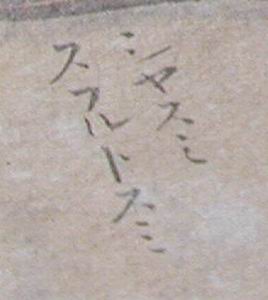
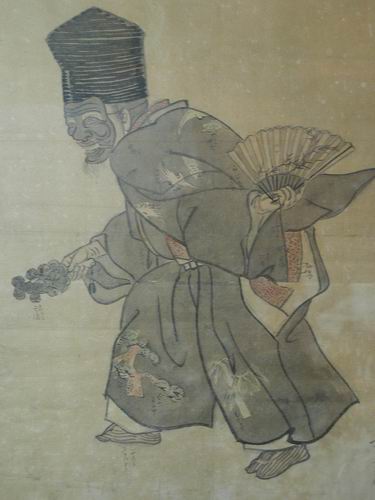
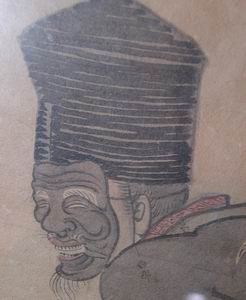
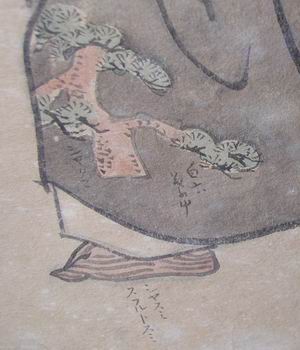







Japanese Painting of a Masked Man by 19C Master Artist Keibun景文 (A.D. 1779-1843)
Size About 21.5" x 19"
Keibun景文 (A.D. 1779-1843) N. Matsumura Keibun 松村景文 A. Shiso 子藻 F. N. Kaname 耍人 Go. Kakei 華溪 S. Shijo school. Studied under his brother, Goshun 吳春 (1752-1811). L & C. Lived in Kyoto. The youngest brother of Goshun. Associated with Koishi Genzui, a Confucian. Versed in the art theory of the Ming and Qing dynasties. Sp. flowers and birds.
Matsumura Keibun [Kakei]
(b Kyoto, 1779; d Kyoto, 26 May 1843). Japanese painter. He was a leading figure in the Shijo school established by his half-brother, MATSUMURA GOSHUN (see JAPAN, §VI, 4(viii)). Their father, a fourth-generation official of the Kyoto gold mint, died when Keibun was two years old, making it likely that he would follow Goshun, 27 years his senior, into an artistic career. Keibun mastered the techniques of painting taught at Goshun’s studio at Shijo-Sakaimachi in Kyoto. He studied the work of MARUYAMA OKYO, whose blend of realism and decorative beauty exerted a major influence on him. Keibun’s numerous sketchbooks reveal his lifelong adherence to Okyo’s dictum to draw from nature. Additionally, he was familiar with Chinese literati painting (Bunjinga) and art theories of the Ming (1368–1644) and Qing (1644–1911) periods. In his later years he associated with Koishi Genzui (1793–1865), a leading figure of Confucian literati circles in Kyoto (see JAPAN, §VI, 4(vi)(d)). In 1797 Keibun’s work was chosen for exhibition by the leading literati scholar and painter, Minagawa Kien (1734–1807) who from 1792 sponsored twice-yearly exhibitions of new works of painting. By 1801 his designs were being included with those of Goshun and other Kyoto artists in woodblock-printed picture-books (ehon). After Goshun’s death in 1811 Keibun shared the leadership of the Shijo school with fellow-pupil OKAMOTO TOYOHIKO, and the two became the most popular painters in Kyoto. Keibun was particularly noted for his bird-and-flower (kacho) compositions. Typical of these is Spring Blossoms and Autumn Foliage, a pair of six-panel folding screens (Kyoto, Akiko Kato priv. col.; see Harada, illus. no. 8). These brilliantly coloured screens depict seasonal birds and flowers with detailed realism. In place of expressive brushwork, Keibun stressed the elegant disposition of closely observed forms against a gold background.
Click at the Images Below to See Other Paintings of this Painter in the Collection
Click Here to See Other Japanese Paintings
Click Here to See Other Paintings
Click Here to Go Back to Homepage